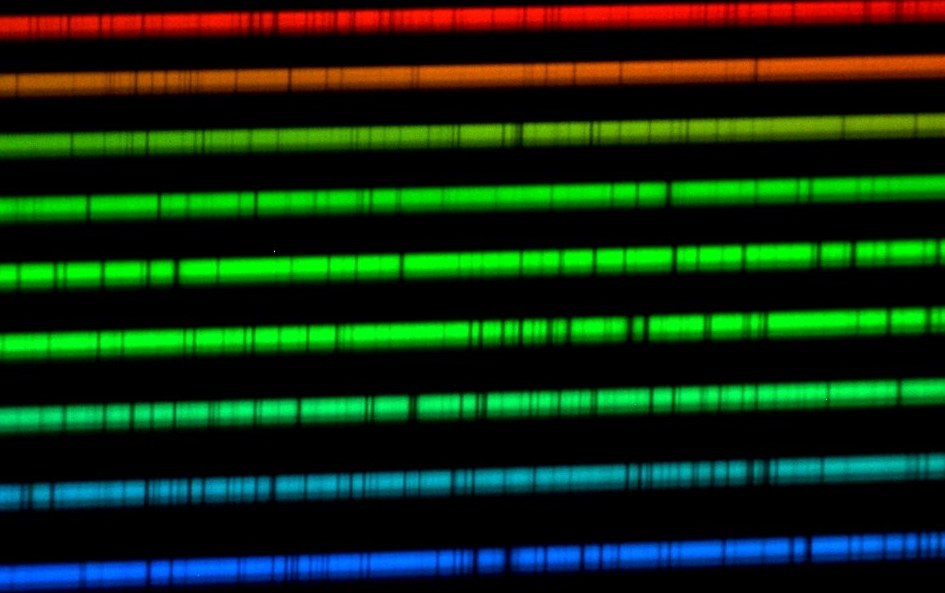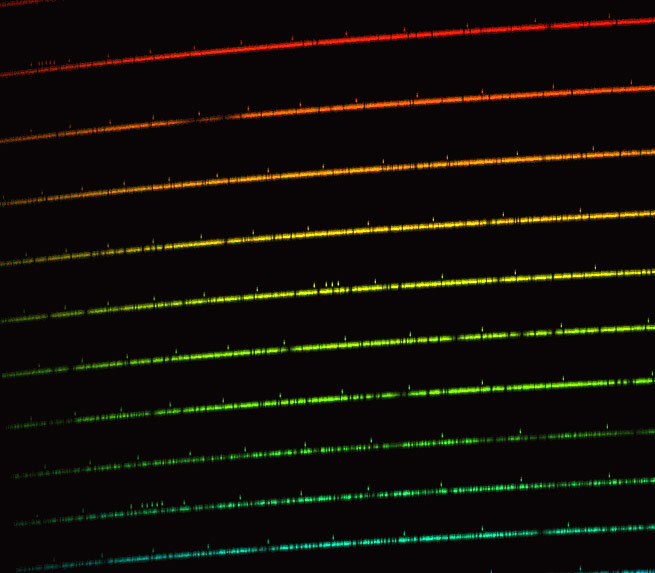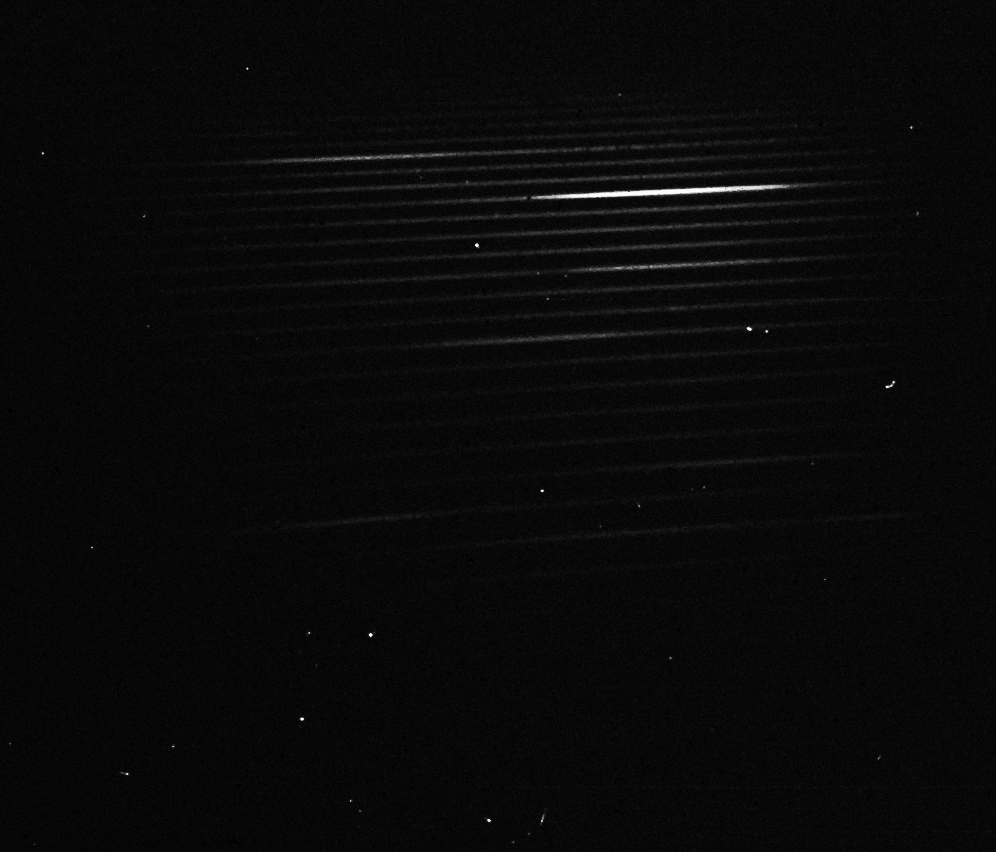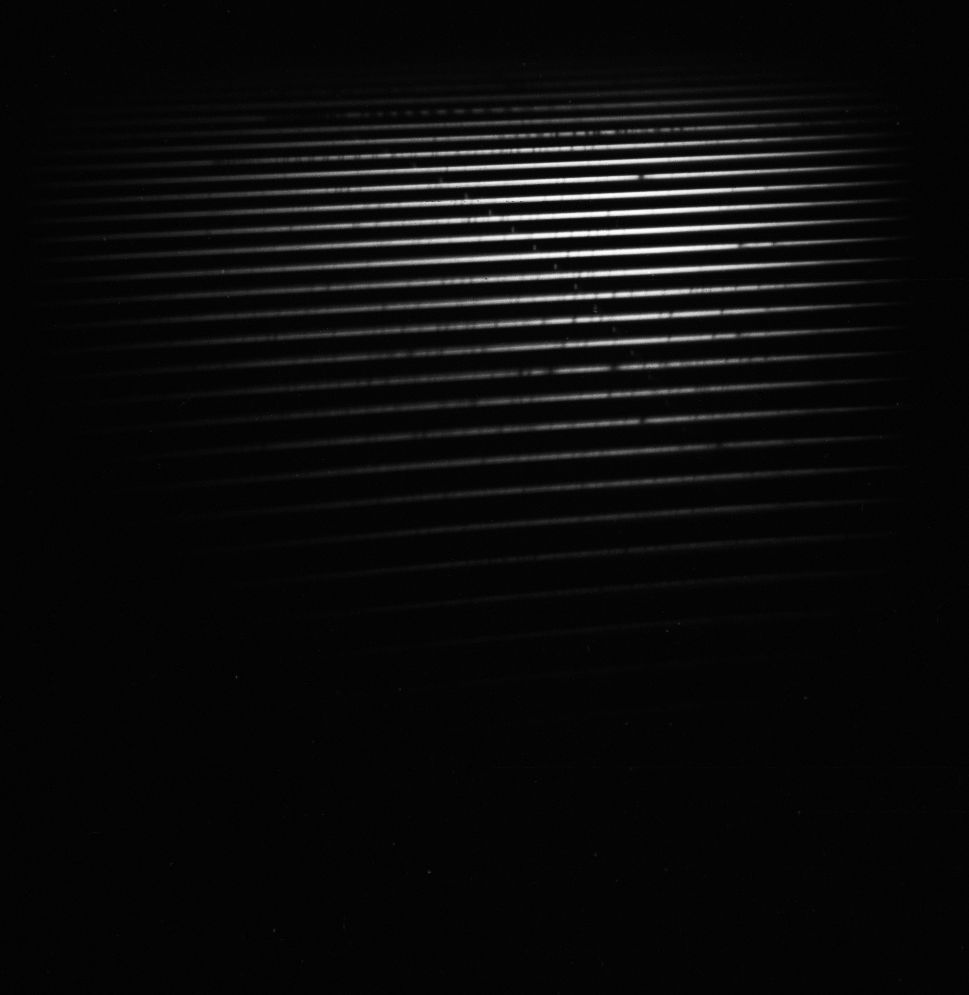

When you are going to develop an echelle spectrograph, it is a good idea to program a simulator for the instrument in parallel. In this way it is possible to optimize several aspects, which otherwise consume hundreds of hours of development and obviously much money.

First fiber-fed echelle spectra of stars were obtained in August 2009. This time my goal was to push frontiers in magnitudes as far as possible. The faintest targets so far were Wolf-Rayet stars WR136 and WR140.

Faint mag 7.6 star WR136 shows several broad emission lines resulting from the strong stellar wind blowing away 10-4 solar masses per year!
This is a single exposure of 1800 seconds, so many hard to remove cosmics are found.
For better orientation I blink this spectrum against a spectrum of the Moon at the same resolution.

Echelle spectrum of 51 Peg. Back in 1995 this star was the very first, where an extrasolar planet around a solar-type star was detected.
Again blinked against a moon spectrum, it is interesting to note the blue-shift of the stellar lines, resulting from the Dopplershift . It is predominatly caused by a radial component of 33km/sec in approach of the velocity vector of this star .
Comments welcome, contact:
